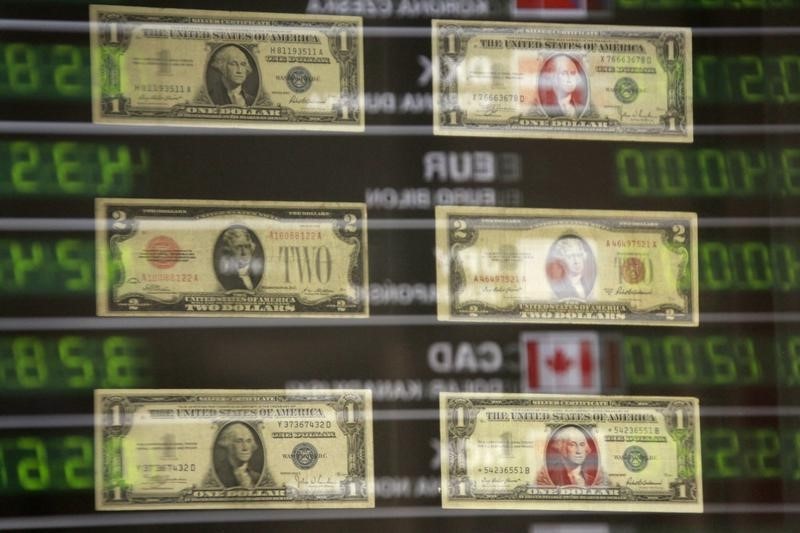* Dollar trims gains made in knee-jerk reaction to China easing
* Shanghai stocks drop despite China steps
* Euro, yen seen continuing to gain from risk aversion longer term
* Yuan promptly weakens after "jumbo" easing (Updates throughout)
By Shinichi Saoshiro
TOKYO, Aug 26 (Reuters) - The dollar was subdued against the euro and yen on Wednesday, losing its bounce as already fragile risk sentiment weakened once it became clear that China's policy easing steps had failed to shore up battered Shanghai shares.
In volatile trading, the U.S. currency was up 0.2 percent at 119.12 yen JPY= but off the high of 120.40 scaled overnight. It had managed to pull away from a seven-month low of 116.15, after China's central bank cut interest rates for the second time in two months late on Tuesday.
The greenback traded above 125 yen less than two weeks ago, before wide-spread risk aversion prompted investors to buy back the yen and euro - currencies used to fund investments into riskier assets.
The euro rose 0.1 percent to $1.1531 EUR= , after a 0.9 percent overnight loss pushed it away from a seven-month peak of $1.1715.
The Shanghai Composite Index .SSEC was down 2.3 percent even though the People's Bank of China (PBOC) cut the one-year benchmark bank lending rate by 25 basis points to 4.6 percent, and reduced reserve requirements (RRR) by 50 basis points to 18 percent for most big banks. ID:nL4N1101XE
The steps, which many had expected the PBOC to roll out last weekend, came after an accelerated freefall in Chinese shares triggered a worldwide domino effect on equities and commodities.
Some analysts anticipate Beijing implementing further measures, and the prospect gave the dollar some support.
"Dollar moves are being dictated by equities. But there is some caution towards aggressively buying currencies like the yen amid hopes that China will come up with additional stock-supporting and easing measures, though this is not yet consensus," said Kyosuke Suzuki, director of forex at Societe Generale (PARIS:SOGN) in Tokyo.
"Dollar/yen and euro/yen trades are attracting much attention from both speculators and real money investors. But given the wide price swings, it appears few are willing to trade cash and choose options instead," he said.
In a further sign that spoiled risk sentiment could continue driving such currency pairs, initial Wall Street gains evaporated on Tuesday despite the PBOC's easing and U.S. stock index futures ESc1 fell about 0.4 percent in Asian trade on Wednesday.
"We have seen the yen and particularly euro gain on flight from risk which results in unwinding of carry trades. The euro has developed a reverse correlation with equities, particularly after the rout in China. Given its ample liquidity, it will likely continue to gain in times of 'risk off,'" said Junichi Ishikawa, market analyst at IG Securities in Tokyo.
The Australian dollar, used as a liquid China proxy, was flat at $0.7128 AUD=D4 and still within reach of a 6-1/2-year low of $0.7044 struck on Monday.
The Chinese yuan promptly weakened after PBOC's extensive easing. Spot yuan CNY=CFXS was changing hands at 6.4234 to the dollar from Tuesday's close of 6.4124.
"It is not the first time for China to roll out jumbo easing, however it is the first time for China to ease aggressively when the consensus view is shifting towards RMB (renminbi) depreciation," strategists at OCBC Bank wrote.
"Therefore, we see a good chance that RMB may weaken further in both onshore and offshore market as a knee jerk reaction to China's jumbo easing."
(Editing by Simon Cameron-Moore)
